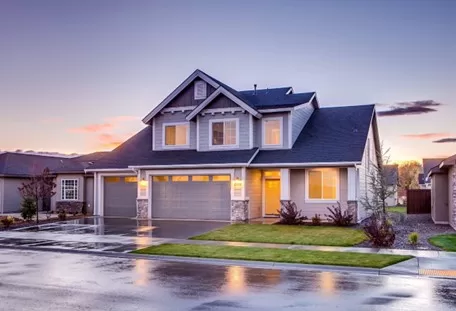Choosing the right roofing style for your home is a critical decision that impacts not only its aesthetic appeal but also its durability, energy efficiency, and ability to withstand local weather conditions.
Different climates demand specific roofing materials and designs to ensure longevity and performance. Whether you live in a hot and humid coastal region, a cold and snowy northern area, or a dry desert environment, understanding the best roofing styles for your climate can save you time, money, and stress in the long run. In this article, let’s explore the most suitable roofing options for hot and cold climates.
Roofing for Hot and Humid Climates
Hot and humid climates, such as those found in the southeastern United States, the Caribbean, or parts of Southeast Asia, present unique challenges for roofing systems. High temperatures, heavy rainfall, and frequent storms, including hurricanes, require roofs that are durable, water-resistant, and capable of reflecting heat to maintain energy efficiency. Example:
Metal Roofing
Metal roofs are an excellent choice for hot and humid climates. They are highly reflective, reducing heat absorption and keeping homes cooler. Their durability also makes them resistant to heavy rain, high winds, and even hurricane-force conditions. Metal roofs are low-maintenance and have a long lifespan, often lasting 40 to 70 years. Plus they are resistant to mold and mildew which thrive in humid environments.
Tile Roofing
Clay or concrete tiles are another popular option in warm, humid regions. These materials are naturally resistant to moisture and can withstand intense heat without warping or deteriorating. Tile roofs also provide excellent ventilation, allowing hot air to escape and keeping homes cooler. Their heavy weight makes them stable in high winds, a crucial factor in hurricane-prone areas. For homeowners in Florida, partnering with a reputable Florida roofing company can ensure proper installation of tile or metal roofs to maximize their performance in the state’s challenging climate.
Asphalt Shingles with Reflective Coatings
While traditional asphalt shingles may not be ideal for extreme heat, modern versions with reflective coatings or granules can perform well in hot climates. These shingles are designed to reflect sunlight, reducing heat buildup in the attic and lowering cooling costs. They are also more affordable than metal or tile options, making them a practical choice for budget-conscious homeowners.
Roofing for Cold and Snowy Climates
In cold and snowy climates, such as those in the northern United States, Canada, or parts of Europe, roofs must withstand freezing temperatures, heavy snowfall, and ice dams. The right roofing style can prevent structural damage and improve energy efficiency during long winters. Example:
Asphalt Shingles
Asphalt shingles are a popular choice in cold climates due to their affordability and versatility. High-quality shingles with strong wind resistance and impact ratings are essential for areas prone to blizzards or heavy snow. Dark-colored shingles can help absorb heat from the sun, melting snow and reducing the risk of ice dams.
Metal Roofing
Metal roofs are also highly effective in snowy regions. Their smooth surface allows snow to slide off easily, preventing heavy accumulation that could strain the roof structure. Metal roofs are also durable against freezing temperatures and resistant to cracking or warping.
Slate Roofing
For homeowners seeking a premium option, slate roofs offer exceptional durability in cold climates as a roofing style. Slate is naturally resistant to extreme temperature changes and can last over a century with proper maintenance. Its weight and strength make it capable of supporting heavy snow loads, though professional installation is critical to ensure performance.

